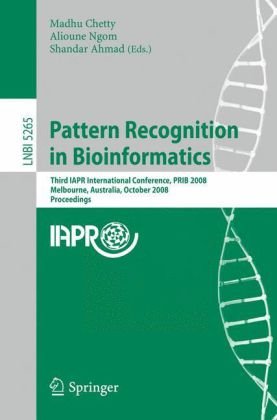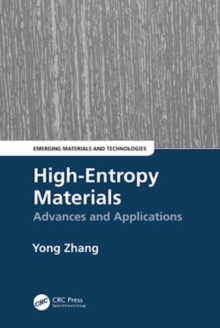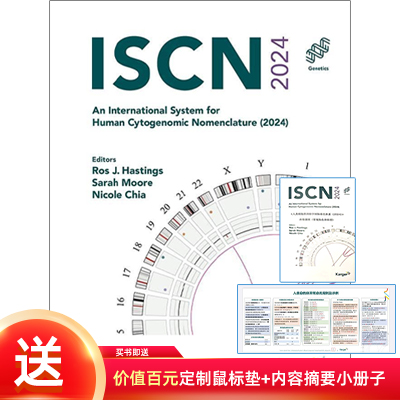图书简介
In the post-genomic era, a holistic understanding of biological systems and p- cesses,inalltheircomplexity,is criticalincomprehendingnature?schoreography of life. As a result, bioinformatics involving its two main disciplines, namely, the life sciences and the computational sciences, is fast becoming a very promising multidisciplinary research ?eld. With the ever-increasing application of lar- scalehigh-throughputtechnologies,suchasgeneorproteinmicroarraysandmass spectrometry methods, the enormous body of information is growing rapidly. Bioinformaticians are posed with a large number of di?cult problems to solve, arising not only due to the complexities in acquiring the molecular infor- tion but also due to the size and nature of the generated data sets and/or the limitations of the algorithms required for analyzing these data. Although the ?eld of bioinformatics is still in its embryonic stage, the recent advancements in computational and information-theoretic techniques are enabling us to c- ductvariousinsilicotestingandscreeningofmanylab-basedexperimentsbefore these are actually performed in vitro or in vivo. These in silico investigations are providing new insights for interpretation and establishing a new direction for a deeper understanding. Among the various advanced computational methods currently being applied to such studies, the pattern recognition techniques are mostly found to be at the core of the whole discovery process for apprehending the underlying biological knowledge. Thus, we can safely surmise that the - going bioinformatics revolution may, in future, inevitably play a major role in many aspects of medical practice and/or the discipline of life sciences.
Protein: Structure, Function, and Interaction.- Sequence Based Prediction of Protein Mutant Stability and Discrimination of Thermophilic Proteins.- A Method to Find Sequentially Separated Motifs in Biological Sequences (SSMBS).- Predicting SUMOylation Sites.- DFS Based Partial Pathways in GA for Protein Structure Prediction.- Evaluation of the Stability of Folding Nucleus upon Mutation.- Prediction of Protein Beta-Sheets: Dynamic Programming versus Grammatical Approach.- Using Multi-scale Glide Zoom Window Feature Extraction Approach to Predict Protein Homo-oligomer Types.- Extraction of Binding Sites in Proteins by Searching for Similar Local Molecular Surfaces.- Learning, Classification, and Clustering.- A Clustering Based Hybrid System for Mass Spectrometry Data Analysis.- A Modified Markov Clustering Approach for Protein Sequence Clustering.- Feature Selection and Classification for Small Gene Sets.- Pseudoknot Identification through Learning TAGRNA.- Support Vector Based T-Score for Gene Ranking.- Prediction of Transcription Factor Families Using DNA Sequence Features.- g-MARS: Protein Classification Using Gapped Markov Chains and Support Vector Machines.- Bio-Molecular Networks and Pathways Analysis.- Domain-Domain Interaction Identification with a Feature Selection Approach.- Dividing Protein Interaction Networks by Growing Orthologous Articulations.- Constraint Minimization for Efficient Modeling of Gene Regulatory Network.- Fusion of Gene Regulatory and Protein Interaction Networks Using Skip-Chain Models.- TopEVM: Using Co-occurrence and Topology Patterns of Enzymes in Metabolic Networks to Construct Phylogenetic Trees.- Generating Synthetic Gene Regulatory Networks.- Microarray and Gene Expression Analysis.- Gene Selection for Microarray Data by a LDA-Based Genetic Algorithm.- Sequential Forward Selection Approach to the Non-unique Oligonucleotide Probe Selection Problem.- On Finding and Interpreting Patterns in Gene Expression Data from Time Course Experiments.- Microarray Design Using the Hilbert?Schmidt Independence Criterion.- Identifying Non-random Patterns from Gene Expression Profiles.- A Study on the Importance of Differential Prioritization in Feature Selection Using Toy Datasets.- Weighted Top Score Pair Method for Gene Selection and Classification.- Data Mining and Knowledge Discovery.- Identifying Conserved Discriminative Motifs.- Exploratory Data Analysis for Investigating GC-MS Biomarkers.- Multi-relational Data Mining for Tetratricopeptide Repeats (TPR)-Like Superfamily Members in Leishmania spp.: Acting-by-Connecting Proteins.- Heuristic Non Parametric Collateral Missing Value Imputation: A Step Towards Robust Post-genomic Knowledge Discovery.- Protein Expression Molecular Pattern Discovery by Nonnegative Principal Component Analysis.- Gene Ontology Assisted Exploratory Microarray Clustering and Its Application to Cancer.- Discovery of Biomarkers for Hexachlorobenzene Toxicity Using Population Based Methods on Gene Expression Data.- Applications of High Performance Computing.- Exploiting Fine-Grained Parallelism in the Phylogenetic Likelihood Function with MPI, Pthreads, and OpenMP: A Performance Study.- Massively Parallelized DNA Motif Search on the Reconfigurable Hardware Platform COPACOBANA.- GPU-MEME: Using Graphics Hardware to Accelerate Motif Finding in DNA Sequences.- Accelerating BLASTP on the Cell Broadband Engine.
Trade Policy 买家须知
- 关于产品:
- ● 正版保障:本网站隶属于中国国际图书贸易集团公司,确保所有图书都是100%正版。
- ● 环保纸张:进口图书大多使用的都是环保轻型张,颜色偏黄,重量比较轻。
- ● 毛边版:即书翻页的地方,故意做成了参差不齐的样子,一般为精装版,更具收藏价值。
关于退换货:- 由于预订产品的特殊性,采购订单正式发订后,买方不得无故取消全部或部分产品的订购。
- 由于进口图书的特殊性,发生以下情况的,请直接拒收货物,由快递返回:
- ● 外包装破损/发错货/少发货/图书外观破损/图书配件不全(例如:光盘等)
并请在工作日通过电话400-008-1110联系我们。
- 签收后,如发生以下情况,请在签收后的5个工作日内联系客服办理退换货:
- ● 缺页/错页/错印/脱线
关于发货时间:- 一般情况下:
- ●【现货】 下单后48小时内由北京(库房)发出快递。
- ●【预订】【预售】下单后国外发货,到货时间预计5-8周左右,店铺默认中通快递,如需顺丰快递邮费到付。
- ● 需要开具发票的客户,发货时间可能在上述基础上再延后1-2个工作日(紧急发票需求,请联系010-68433105/3213);
- ● 如遇其他特殊原因,对发货时间有影响的,我们会第一时间在网站公告,敬请留意。
关于到货时间:- 由于进口图书入境入库后,都是委托第三方快递发货,所以我们只能保证在规定时间内发出,但无法为您保证确切的到货时间。
- ● 主要城市一般2-4天
- ● 偏远地区一般4-7天
关于接听咨询电话的时间:- 010-68433105/3213正常接听咨询电话的时间为:周一至周五上午8:30~下午5:00,周六、日及法定节假日休息,将无法接听来电,敬请谅解。
- 其它时间您也可以通过邮件联系我们:customer@readgo.cn,工作日会优先处理。
关于快递:- ● 已付款订单:主要由中通、宅急送负责派送,订单进度查询请拨打010-68433105/3213。
本书暂无推荐
本书暂无推荐














